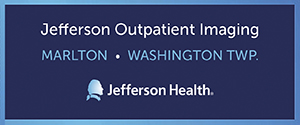
For a complete list of our average SAT scores, graduation rates and AP classes offered and taken in our area, click here.
For a complete list of faculty to student ration, click here.
EXAMINING THE NEW SAT
The test has changed—and our local schools are ready for it
By Lindsey Getz
FOR 90 YEARS, students have been subjected to the stress of having their knowledge tested with a Scholastic Aptitude Test—more commonly known as the SAT. The SAT was first administered to high school students in 1926 and was similar to today’s test in many ways. It consisted of challenging arithmetic questions and tested students on their understanding of the English language with vocabulary and analogy questions. It was difficult then—and it’s difficult now, even after a relatively significant revamp that was revealed in March 2016. Students from the Class of 2017 and below are finding that the new SAT is still quite challenging and requires significant preparation. To get students ready, many of our area schools are making changes in the classroom and also upping the ante on SAT prep courses.
Among the changes to the SAT, one that is getting a lot of buzz is the elimination of a penalty for wrong answers. Jason Susko, supervisor of guidance for Eastern Regional High School, says that this, alone should completely change students’ strategy and approach to the test. While the rule of thumb may previously have been to skip answers that you couldn’t narrow down to at least two choices with certainty, Susko says students should be venturing a guess on every problem.
Susko says other significant changes include the fact that there are now four possible answers as opposed to five, the sections tend to be much longer (as long as 65 minutes each), and there are now math sections in which calculators are not allowed. The test also went from three sections to just two—math and reading/writing. Whereas the old test had a highest possible score of 2,400 for the three sections, the new test has returned to a score of 1,600.
In general, the new SAT also focuses more on analytical skills rather than memorization. Susko says there are not only more questions that involve reading passages and interpreting information, but the math questions contain more “multiple step” questions. In general, he says students may require a higher degree of “persistence and pacing” with the new test.
Because of this, it’s essential that students are putting in the time to prepare. Students can no longer just memorize and regurgitate information. They have to hone their analytical skills. One way to do that? Going to school and challenging yourself daily makes a world of difference, says Justin Smith, Ed.D., assessment, account- ability, and planning coordinator and district supervisor of world languages and family and consumer sciences for the Lenape Regional High School District. Smith says the district believes the best way for students to prepare is to take rigorous high school courses and work hard in their studies.
“Our district, through the Under- standing by Design curriculum framework, emphasizes transfer and performance tasks over rote memorization,” Smith says. “The new SAT is more aligned with these kinds of college-readiness skills, where students are learning to think critically and interpret text as well as to apply and transfer their knowledge to skills and new situations. By working in our courses, students are already preparing themselves for the SAT and for college.”
James Riordan, director of guidance for Cherry Hill High SchoolWest, agrees that daily preparation in the classroom can go a long way. At West, there has been an effort to incorporate changes from the SAT into the way in which courses are taught.
With the increase in the number of contextual or “real world math problems,” as Riordan puts it, on the test, students can anticipate more of a focus on this kind of problem-solving in the classroom. Similarly, the in- creased text complexity, which also requires students to be able to synthesize data, is also shifting the way students are taught in the classroom.
But Riordan says that in the end, a lot of it does come down to practice. For the past eight years, West has offered SAT prep classes in the summer. This past summer, those courses were redesigned to fit the new SAT.
“There has to be some shifts in the classroom,” Riordan says. “But the practice and exposure to questions and material is crucial. Exposure creates a comfort level. Understanding, scoring, and practicing under real time situations, as well as familiarity with the format, are all important.”
Published (and copyrighted) in South Jersey Magazine, Volume 13, Issue 6 (September, 2016).
For more info on South Jersey Magazine, click here.
To subscribe to South Jersey Magazine, click here.
To advertise in South Jersey Magazine, click here.












